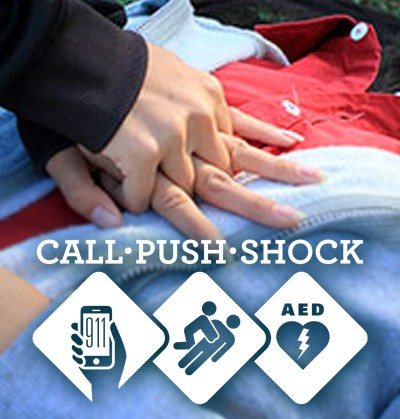
SAN
FRANCISCO, CA -- You stand a better chance of survival if your heart stops
beating while you’re in an exercise facility than if you’re in another type of
indoor public place, a new study found. Overall,
50 percent of cardiac arrest victims survived if the attack occurred in a
public place where some sort of exercise was happening, whereas only 36 percent
of those who experienced cardiac arrest in other indoor public places survived.
Exercise facilities included places traditionally thought of, such as gyms and
fitness clubs, as well as places considered alternative exercise venues, such
as bowling alleys and dance studios. “Survival
from sudden cardiac arrest with prompt resuscitation can really be quite high
at exercise facilities,” said lead researcher Dr. Richard L. Page, a cardiac
electrophysiologist and chairman of the Department of Medicine at the
University of Wisconsin. “That relates to the fact that people are healthier,
they’re feeling fit enough to go exercise, and they had a higher likelihood of
CPR.” “We
shouldn't just be deploying [automated external defibrillators (AEDS)] at
fitness clubs,” Page said. “We ought to consider less traditional exercise
facilities as having patients at risk who could benefit from prompt
resuscitation.” Though
it’s often confused with heart attack, sudden cardiac arrest is actually a
different phenomenon. Heart
attack is a “plumbing problem,” Page said. A blockage in the vessels of the
heart cuts off blood flow, and part of the heart muscle dies. In some cases, a
cardiac arrest can also occur. Sudden
cardiac arrest, Page explained, is caused by a disruption in the heart's
electrical system. “You're unconscious within seconds and you're dead in 10
minutes if you don't get CPR and a defibrillation,” he said. “The chance of survival
is only a couple percent if you can’t get immediate attention.” The
goal of defibrillation is to reset the heart so it will return to a normal
rhythm. In
their research, Page and his colleagues studied where cardiac arrests occurred
in the Seattle area -- in indoor public places only -- between 1996 and 2008.
They found 960 cases, 150 of which occurred at exercise facilities. In the
exercise facilities, 90 percent of the victims were men, 77 percent got CPR, 16
percent were treated with an AED and 50 percent survived. Elsewhere
in indoor public places, 75 percent of victims were men, 55 percent got CPR, 7
percent were treated with an automatic defibrillator machine and 36 percent
survived. At the
exercise facilities, researchers found that 16 percent of the cardiac arrest
sufferers were playing basketball, 9 percent were dancing, 9 percent “working
out,” 8 percent were on a treadmill and 8 percent each were playing tennis,
bowling, swimming or weight lifting. Though
exercise is good for you overall, it does raise the risk for cardiac arrest,
said Page, former president of the Heart Rhythm Society. When
asked why bowling alleys have so many cases of cardiac arrest, considering that
bowling isn't a high-impact form of exercise, Page said the answer might lie in
the fitness of bowlers and the atmosphere at a bowling alley, where people may
be drinking alcohol. He
suggested that AEDs, which are often required in certain public places, should
be placed in bowling alley s and dance studios, too. The machines typically
cost $2,000 to $3,000. Dr.
Byron K. Lee, director of the electrophysiology laboratories and clinics at the
University of California, San Francisco, said that though the study was
interesting, it did not say whether the various physical activities boosted the
risk for cardiac arrest over “baseline.” Nor, he said, did it provide enough
information to confirm whether the risk is high enough to warrant
defibrillators in those places. The
study was to be presented Thursday in San Francisco at an annual meeting of the
Heart Rhythm Society. Experts note that research presented at meetings should
be considered preliminary because it has not been subjected to the rigorous
scrutiny given to research published in medical journals. SOURCE: HealthDay
